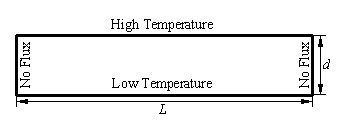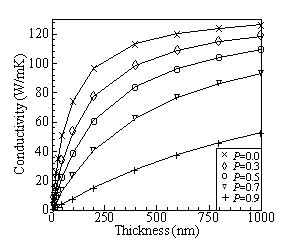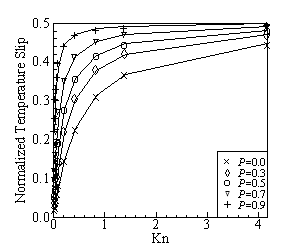414c Anisotropic Thermal Conductivity of Nanoscale Confined Thin Films Via Lattice Boltzmann Method
As we approach the nanoscale domain, materials start to act characteristically different in comparison to the macroscale. This considerable change in the behavior results from the onset of sub-continuum regime where the long established continuum based models break down and more rigorous physics is required to capture the sub-continuum behavior of the system. Few examples where the sub-continuum effects become critical is the thermal transport in the nanoscale confined solid films in the state-of-the-art electronics and data storage devices. In these devices, an increased emphasis has been laid on achieving smaller and faster systems, which has forced their characteristic length to nanometer scale. At these scales the sub-continuum effects of ballistic thermal transport, temperature slip at the boundaries, and anisotropic thermal conductivity become very prominent and energy management plays a crucial role in the operation and reliability of the system.
Continuum based Fourier equation is inadequate to describe these phenomena and a rigorous physics based model, e.g., Boltzmann transport equation (BTE), is required. Since the BTE, based on phase-space formulation, is computationally intensive, an alternative model stemmed from BTE, lattice Boltzmann method (LBM), is developed to successfully capture the transient thermal profile at a reduced computational cost. The virtues of being inherently transient, easy to hybridize with other physical models and length scales, and inherently parallel in nature made LBM as our natural choice.
In sub-continuum domain the boundary conditions become very significant and they govern the effective mean free path of the carriers and thus control the transport properties of the solid. At the boundary, energy carriers are scattered both specularly and diffusively. Therefore, we incorporated a surface scattering factor, P, which is the fraction of carriers undergoing diffusive scattering at the boundary, and studied the thermal conductivity and temperature slip at the solid boundaries.
As a test case thermal behavior of a silicon thin film is simulated via LBM. The length of the thin film, L, is kept constant while its thickness, d, is varied from a few times of the bulk carrier mean free path to less than the mean free path so as to cover from the continuum to the sub-continuum domain. Neumann boundary conditions are considered on the sides while Dirichlet boundary conditions are considered on the top and the bottom boundary of the silicon thin film as shown in the Fig. 1.

Fig. 1. A schematic of the silicon thin film.
LBM simulations were carried out for various thicknesses d and surface conditions via different values of P. Thermal conductivity of silicon thin films is calculated for five different specularity values with thicknesses ranging from 1000 nm to 10 nm and is presented in the Fig. 2 (a). It can be observed that the thermal conductivity depends strongly on the dimensions of the film and the film's surface condition through P, unlike for the bulk case where the thermal conductivity is assumed to be a constant property of a solid. It has been observed that film with lower specularity shows higher conductivity. This behavior results from the fact that low specularity translates to a rougher surface. This results in a higher degree of thermalization of carriers at the boundary, leading to higher energy transfer and thus higher conductivity. Also, effective mean free path of the energy carriers does no longer remains a material property and smaller thickness of the film results in a reduced effective mean free path which translates into lower thermal conductivity values.
Another sub-continuum effect of temperature slip at the top and bottom interfaces of the film is captured by our LBM simulation and is presented in Fig. 2 (b). This temperature slip arises because of the presence of non-equilibrium condition between the carriers entering and leaving at the boundaries and the carriers inside the thin film.


Fig. 2. (a) Thermal conductivity for silicon thin film, and (b) Temperature slip at the interface for silicon thin film calculated from LBM simulation.
The simulation results can be used as correction factors for sub-continuum effect in the already existing, Fourier equation based thermal simulators. The LBM method presented in this work can play an important role in modeling the design and operation of the state-of-the-art sub-continuum systems.